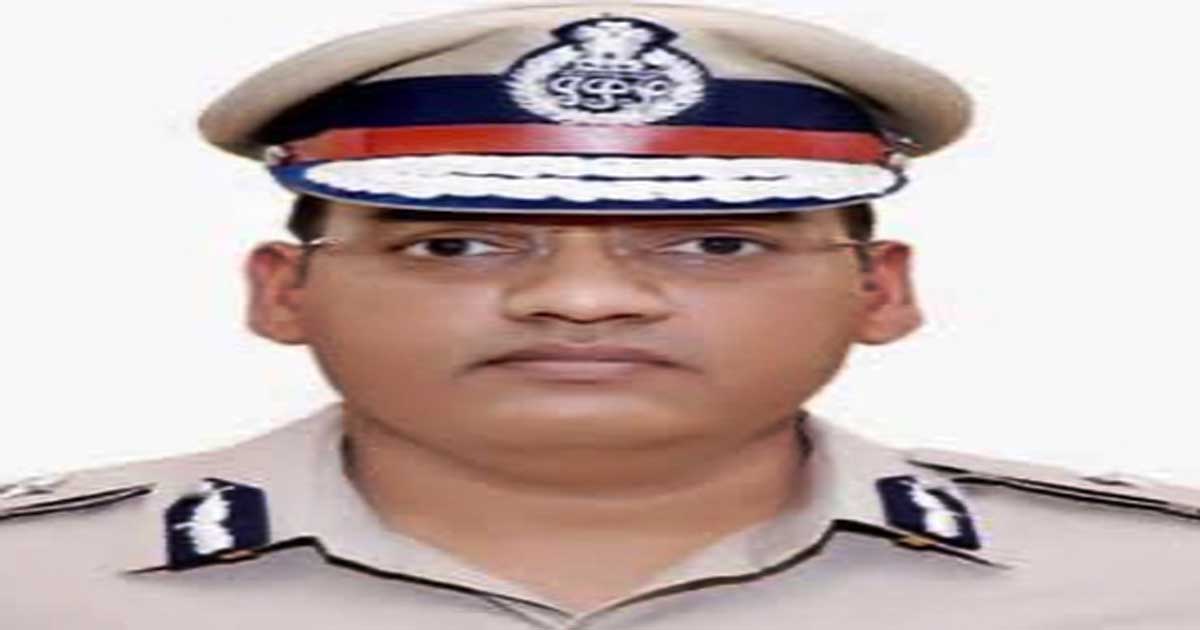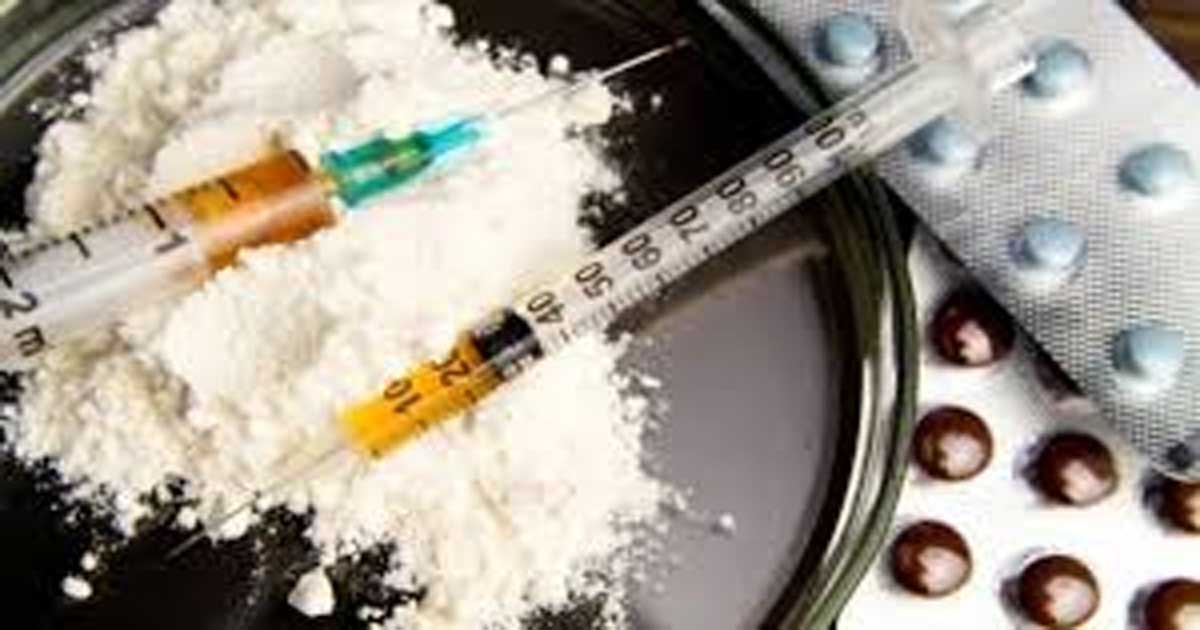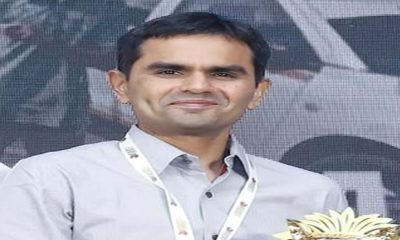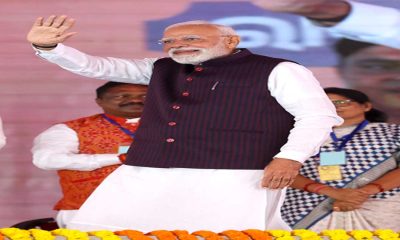National News
Mulayam Singh Yadav: The three-time UP CM was the ‘Dhartiputra’ of national politics
He was known as ‘Dhartiputra’ and remained a true son of the soil. His style of politics was firmly grounded and success and failure did not affect him.
Mulayam Singh Yadav was one of the last of his generation of politicians who kept his values intact and did not corporatize his politics.
For him, the last man in the line remained important – whether it was from his family, his village or his state. He was a friend of friends and even turned his foes into friends.
Mulayam Singh had first contested the Assembly election from Karhal in 1967 on Ram Manohar Lohia’s Samyukta Socialist Party ticket.
Groomed by the likes of Ram Manohar Lohia and Raj Narain, Yadav served eight terms as the member of the state Assembly.
In 1975, during Indira Gandhi’s imposition of the Emergency, Yadav was arrested and kept in custody for 19 months.
He first became a state minister in 1977. Later, in 1980, he became the president of the Lok Dal in Uttar Pradesh which later became a part of the Janata Dal.
In 1982, he was elected leader of the opposition in the Uttar Pradesh Legislative Council and held that post until 1985. When the Lok Dal party split, Yadav launched the Krantikari Morcha party.
Mulayam Singh Yadav first became the chief minister of Uttar Pradesh in 1989.
Being a shrewd politician, he had the uncanny knack of sensing the upheavals in politics.
After the collapse of the V.P. Singh national government in November 1990, Yadav joined Chandra Shekhar’s Janata Dal (Socialist) party and continued in office as the chief minister with the support of the Congress.
His government fell when the Congress withdrew support in April 1991 and Mulayam Singh lost to the BJP in the midterm elections.
In 1992, Yadav founded his own Samajwadi Party and then allied with the Bahujan Samaj Party for the elections to the Uttar Pradesh Assembly, held in November 1993.
The alliance between the Samajwadi Party and Bahujan Samaj Party prevented the return of the BJP to power in the state and Yadav became the chief minister of Uttar Pradesh with the support of Congress and Janata Dal.
Mulayam’s stand on the movement for demanding separate statehood for Uttarakhand was as much controversial as his stand on Ayodhya movement in 1990 was.
The firing on Ayodhya activists and then Uttarakhand activists at Muzaffarnagar on October 2, 1994 remained black spots of his regime.
In 1995, the SP-BSP alliance broke with the infamous State Guest House incident but Mulayam Singh Yadav made sure that his party bounced back to power in 2003.
He was sworn in as the chief minister of Uttar Pradesh for the third time in September 2003.
Yadav contested the 2004 Lok Sabha elections from Mainpuri while he was still Chief Minister of Uttar Pradesh. However, he later resigned from the Lok Sabha and continued as chief minister till 2007 when the SP lost to the BSP in the state elections.
Mulayam Singh Yadav was one of the few politicians who blatantly promoted nepotism and had no qualms about it. At any given time, there were about a dozen family members in politics in Uttar Pradesh.
“He always pushed us into politics and asked us to make a career for ourselves. It was always he who decided what was best for us and took keen interest in our careers,” said one of his nephews.
Mulayam Singh valued his friends deeply. Whether it was Beni Prasad Varma, or Azam Khan or Mohan Singh or Janeshwar Mishra – each one had a special place in his life.
His war with Balram Singh Yadav and Darshan Singh Yadav in Etawah had acquired legendary proportions, but Mulayam, over a period of time, managed to change his equations and both became his friends.
Mulayam shared a love-hate relationship with the media. His famous ‘Halla Bol’ agitation against some newspapers grabbed national headlines.
However, Mulayam made sure that his individual relationship with journalists never deteriorated. Even if he ticked off a scribe for his writing, he made sure to call out to him and mend fences at the earliest.
For party workers, he remained their beloved ‘Netaji’ – one who was always approachable and available.
“I do not remember a single occasion when I went to meet Mulayam Singh and came back without doing so. He remembered even the smallest party worker by name and it was this that endeared him to everyone,” said a senior party MLA.
Mulayam Singh Yadav was one chief minister who enjoyed full loyalty from his bureaucrats. He took tough decisions and his officers implemented them. In fact, many claim that the politicisation of bureaucracy began only after Mulayam became the chief minister.
In the past five years, after Akhilesh Yadav took over the reins of the party, Mulayam had withdrawn into a shell.
The changing dynamics in the party reduced the stream of visitors into a trickle and Mulayam – for the first time, became a lonely man.
“He would often ask us if there was anyone waiting to meet him. He loved going to the party office and relished the hustle-bustle there. At home, he had almost nothing to do and this bothered him,” said one of his close staff members.
Mulayam was disturbed by the recent happenings in his family — daughter-in-law Aparna joining the BJP, the split between son Akhilesh and brother Shivpal. He made no public mention of it but it was clear that he was deeply affected by what was happening.
The demise of his second wife Sadhana Gupta Yadav in July this year, sources say, left Mulayam distressed and lonely and this led to a deterioration in his physical condition.
Crime
Haryana IPS suicide: Punjab Scheduled Caste panel seeks report from Chandigarh DGP

Chandigarh, Oct 11: The Punjab State Scheduled Castes Commission on Saturday took suo moto notice in the suicide case of Haryana’s ADGP Y. Puran Kumar in Chandigarh and sought a report from the Chandigarh Director General of Police.
Commission Chairman Jasvir Singh Garhi said this matter has come to his notice through the media, on which he has taken action and he has instructed the Director General of Police of Chandigarh to submit a report regarding this matter and the action taken so far on the suicide note and the complaint given by his wife Amneet Kaur through an ADGP-level officer to the commission on October 13.
Also, the Scheduled Castes Commission Chairman will visit the victim’s family’s house on October 13.
Meanwhile, Jai Narayan, a spokesperson for the 31-member committee for justice for Puran Kumar, told the media here that they formed this 31-member committee on Friday to sustain the movement across all over Haryana with key members from various regions.
“The government has not conducted any meaningful investigation, and we demand that at the very least, those responsible be terminated; only then will the post-mortem be performed,” he said.
Meanwhile, protests were held in Rohtak, demanding arrest of the accused in the suicide case. Inspector General of Puran Kumar, who allegedly shot himself dead at his Chandigarh residence on October 7 with his service revolver, left behind a “final note”.
The victim’s spouse, Amneet P. Kumar, a Haryana cadre senior bureaucrat, in a letter to Chief Minister Nayab Singh Saini has sought justice for her husband.
The letter, marked urgent and confidential, two days ago expressed anguish over what she described as a “grave injustice” and “complete administrative inaction” even after more than 48 hours of her husband’s death.
In a nine-page “suicide note”, Puran Kumar reportedly accused nine serving IPS officers of the Haryana Police, a retired IPS officer and three retired IAS officers of “caste-based discrimination”.
The serving officers included DGP Shatrujeet Singh Kapur and Rohtak Superintendent of Police Narendra Bijarniya.
Meanwhile, the government has removed Bijarniya from his post and has been replaced by Surinder Singh Bhoria as the Superintendent of Police of Rohtak.
No posting has been given to Bijarniya as of now. Congress Parliamentary Party chairperson Sonia Gandhi wrote a letter to the wife of late Haryana IPS officer, saying the incident “reveals that even the highest-level officers can be denied social justice on account of discriminatory attitude”.
“The passing away of Mr Y Puran Kumar reveals that even the highest-level officers can be denied social justice on account of the discriminatory attitude and the preconceived notions of the powers that be. Crores of Indians stand with you in your fight for justice,” she wrote.
Mumbai Press Exclusive News
Crores of rupees were defrauded in the name of government jobs, the accused was arrested from Delhi… The accused had received money from hundreds of unemployed people

Mumbai: The Mumbai Economic Wing has claimed to have arrested the accused in a case of cheating in the name of getting government jobs in the central and state governments in several districts of Maharashtra. Santosh Ganpat, a businessman from Navi Mumbai, filed a complaint that the accused Nilesh Kanshi Ram Rathore had charged him Rs 5 lakh for a government job and Rs 5 to 15 lakh for medical tests and appointment letters. The EOW has registered a case against him because he has cheated him of Rs 2.88 crore by promising him a job and during the investigation it was revealed that he has cheated him of Rs 10 crore. The Economic Wing has formed a team to arrest the absconding accused and searched him in Akola and other areas. The accused cheated hundreds of youths for recruitment in RCF in 2022. His complaint was filed with the EOW. The EOW received information that the accused was trying to escape from Delhi, on which the police arrested him from Delhi. The accused has been booked in Mumbai EOW and Pune Deccan. A criminal case has been registered and further investigation is underway. This operation has been carried out under the leadership of EOW chief Nisht Mishra.
Mumbai Press Exclusive News
ANC action, drugs worth crores seized, 6 arrested

Mumbai: The Anti-Narcotics Cell has claimed to have arrested six drug smugglers, including a Nigerian, including a Nigerian, including MD and Natropum tablets worth Rs 7.01 crore, during operations at various locations in Mumbai. 523 grams of cocaine, worth Rs 5.23 crore, was seized from a Nigerian in Vakola, Mumbai. Five accused were arrested in raids conducted in Ghatkopar, Kurla CST, Mazgaon, tardeo, Borivali areas, from whose possession Mephedone MD worth Rs 54.65 lakh was seized. These are part of five inter-state drug gangs. Other drugs including Natropum tablets were also seized in this operation. This operation was carried out by DCP Nunath Dhule on the instructions of the Mumbai Police Commissioner.
-

 Crime3 years ago
Crime3 years agoClass 10 student jumps to death in Jaipur
-

 Maharashtra1 year ago
Maharashtra1 year agoMumbai Local Train Update: Central Railway’s New Timetable Comes Into Effect; Check Full List Of Revised Timings & Stations
-

 Maharashtra12 months ago
Maharashtra12 months agoMumbai To Go Toll-Free Tonight! Maharashtra Govt Announces Complete Toll Waiver For Light Motor Vehicles At All 5 Entry Points Of City
-

 Maharashtra1 year ago
Maharashtra1 year agoFalse photo of Imtiaz Jaleel’s rally, exposing the fooling conspiracy
-

 National News1 year ago
National News1 year agoMinistry of Railways rolls out Special Drive 4.0 with focus on digitisation, cleanliness, inclusiveness and grievance redressal
-

 Maharashtra11 months ago
Maharashtra11 months agoMaharashtra Elections 2024: Mumbai Metro & BEST Services Extended Till Midnight On Voting Day
-

 National News1 year ago
National News1 year agoJ&K: 4 Jawans Killed, 28 Injured After Bus Carrying BSF Personnel For Poll Duty Falls Into Gorge In Budgam; Terrifying Visuals Surface
-

 Crime12 months ago
Crime12 months agoBaba Siddique Murder: Mumbai Police Unable To Get Lawrence Bishnoi Custody Due To Home Ministry Order, Says Report






















